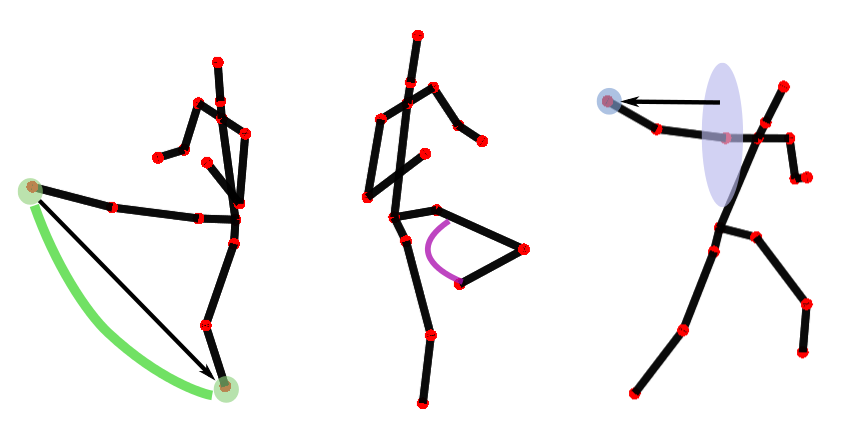
We advocate the inference of qualitative information about 3D human pose, called posebits, from images. Posebits represent boolean geometric relationships between body parts (e.g., left-leg in front of right-leg or hands close to each other). The advantages of posebits as a mid-level representation are 1) for many tasks of interest, such qualitative pose information may be sufficient (e.g. , semantic image retrieval), 2) it is relatively easy to annotate large image corpora with posebits, as it simply requires answers to yes/no questions; and 3) they help resolve challenging pose ambiguities and therefore facilitate the difficult talk of image-based 3D pose estimation. We introduce posebits, a posebit database, a method for selecting useful posebits for pose estimation and a structural SVM model for posebit inference. Experiments show the use of posebits for semantic image retrieval and for improving 3D pose estimation.
| Author(s): | Gerard Pons-Moll and David J. Fleet and Bodo Rosenhahn |
| Book Title: | Proceedings IEEE Conf. on Computer Vision and Pattern Recognition (CVPR) |
| Pages: | 2345--2352 |
| Year: | 2014 |
| Month: | June |
| Project(s): | |
| Bibtex Type: | Conference Paper (inproceedings) |
| Address: | Columbus, Ohio, USA |
| Event Name: | IEEE International Conference on Computer Vision and Pattern Recognition |
| Event Place: | Columbus, Ohio, USA |
| Electronic Archiving: | grant_archive |
| Attachments: | |
BibTex
@inproceedings{PonsMoll_CVPR2014,
title = {Posebits for Monocular Human Pose Estimation},
booktitle = { Proceedings IEEE Conf. on Computer Vision and Pattern Recognition (CVPR)},
abstract = {We advocate the inference of qualitative information about 3D human
pose, called posebits, from images. Posebits represent boolean
geometric relationships between body parts
(e.g., left-leg in front of right-leg or hands close to each other).
The advantages of posebits as a mid-level representation are 1)
for many tasks of interest, such qualitative
pose information may be sufficient (e.g. , semantic image retrieval),
2) it is relatively easy to annotate large image corpora with posebits, as
it simply requires answers to yes/no questions; and 3) they help
resolve challenging pose ambiguities and therefore
facilitate the difficult talk of image-based 3D pose estimation.
We introduce posebits, a posebit database, a method for selecting useful
posebits for pose estimation and a structural SVM model for posebit inference.
Experiments show the use of posebits for semantic image
retrieval and for improving 3D pose estimation.},
pages = {2345--2352},
address = {Columbus, Ohio, USA},
month = jun,
year = {2014},
slug = {ponsmoll_cvpr2014},
author = {Pons-Moll, Gerard and Fleet, David J. and Rosenhahn, Bodo},
month_numeric = {6}
}
